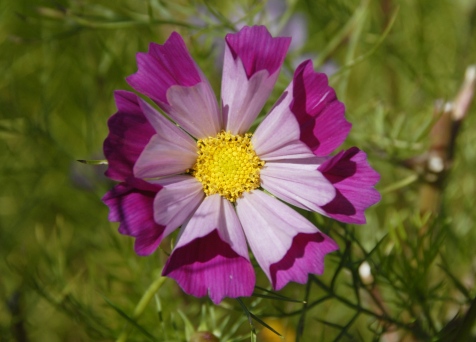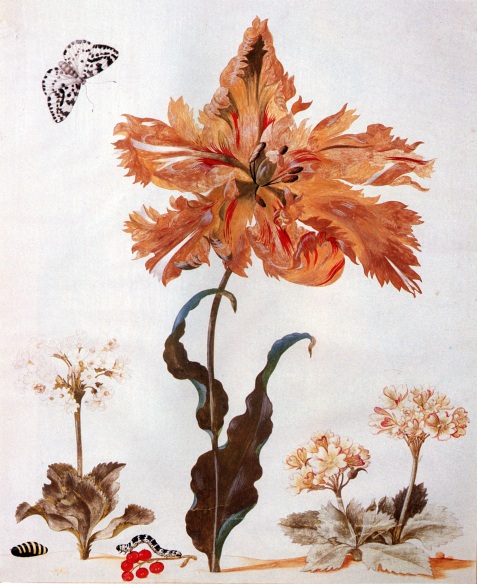
I spent the afternoon outside in a light rain, digging holes for bulbs and putting them in. I must really be a creature of habit; every time I find what I think is the perfect spot for a half-dozen tulips, I dig down and find a half-dozen tulips I put in there last year, or the year before. It’s really getting difficult to find places to put all the bulbs I bought, since I’m loath to pull up anything that’s still blooming (or, really, even still alive). That leaves wide swathes of otherwise deserving dirt that I won’t plant in. Fortunately, or unfortunately, I guess, I do have the 36 or so square feet that was Homer’s dedicated spot beneath the forsythia bush, the space I ceded to him when it became clear he was going to acquisition it anyway. I gradually stopped trying to plant anything in that corner of the yard, since it was only going to get stomped on, tail-whipped to death, or dug up with paws.
So now I’ve planted the Homer Slick Memorial Garden, with a dozen or so Asiatic lilies in assorted colors, a dozen ‘Yellow Parrot’ tulips, a dozen ‘Palestrina’ tulips (pink with green feathering–the sort of flower one either loves, or doesn’t), a dozen ‘Renown’ (carmine red) and a dozen ‘Dordogne’ (sort of stripey orange and yellow and red). It should make quite a show. It certainly made a terrific mess, since I went the extra mile and hauled compost out of the composter and dug it in all the holes. (So easy to put stuff into the composter. So much harder to actually TAKE THE COMPOST OUT AND USE IT.)
Then I went around to the front of the house and put in a dozen ‘Sweetheart’ tulips, a dozen ‘Angelique’ (I know; they’re common.But they’re so damned pretty), and a few dozen of the small bulbs I love so much–snow crocuses, species tulips, and the tiny little Reticulata iris, in this case ‘Gordon.’ These look just like grown-up irises but are only about four inches tall. It seems the smaller the bulb, the earlier it blooms; these will all come up right in the front of the garden in late February or early March, just when the heart really needs a lift.
Then I knelt in a pile of dog poo some thoughtful owner had left behind on my lawn. And I thought I was through with that.
Iris reticulata ‘Gordon’ photo courtesy of JohnScheepers.com.











